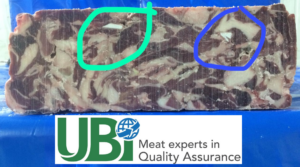COMPLIANCE – Non-Compliant Labeling Issues

Labelling and non-compliance issues and claims
We are all living in an increasingly regulated world. To start, according to the United Nations Food and Food Agriculture Organization (FAO), the world will have a population of more than 9 billion by 2050, up from 6.9 billion in 2010!
Population, income growth and especially the current pandemic have triggered the demand for better lifestyles and standard products. The increase in pollution has deteriorated in some way the quality of food and water; thus, the demand for food safety testing and technologies is increasing worldwide, again exponential growth and interest due to the pandemic.

As forecasted before the pandemic was declared as such (last March 13th, 2020), the globalization of food trade and increasing import-export activities, worldwide, the food quality controls market was projected to experience significant growth in the coming years.
Products, before the trade (import or export), need to pass inspection, testing, and certification processes to ensure safety and compliance with regulatory requirements of export or import destinations.
But most compliance in the food system is still managed with pen and paper. And unfortunately, is inevitable that there will be mistakes (as it happened recently with a meat plant in Uruguay when exporting to China), accidents, miscommunication, confusion, and even without intention non-compliance. When mistakes get made there can be huge safety, environmental and economic impacts to everyone involved within the supply chain.
Labelling is an issue with constant changes as regulations are changing so is necessary to comply with the most recent international standards.
Here are some of the examples of what can go wrong:
- Translation: as they require to be multi-lingual there are often mistakes of misspelling or translating a product
- Dates: we have seen slaughter dates after production which is impossible, and another common mistake is due to the format(ex. US month/day/year) and in other markets day/month/year
- Lack of internal labels: certain markets require as well an internal label inside the carton
- Blur labels: as sometimes the supplier stamps with ink, they are often blur due to humidity or bad quality
- Description: regulations change and maybe the supplier is not aware that is using an old batch of labels

Companies must pay close attention to regulations on their operations. Adhering to current regulations that define how products are produced, labelled, shipped is essential to avoid expensive fines or even worse to get banned from a certain market.
Recent stats show that labelling claims are extremely costly, as they can require product recall or diverting products to another market amounting to millions of dollars. And that doesn’t include the loss in reputation, brand awareness because of a recall.
According to a US survey, 52% of all food recalls cost the affected companies more than $10 million – and in some cases losses of over $100 million!
Do not hesitate to contact an expert to assure quality and labelling consistency.
